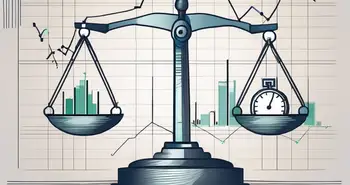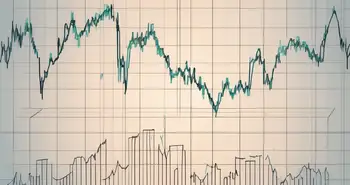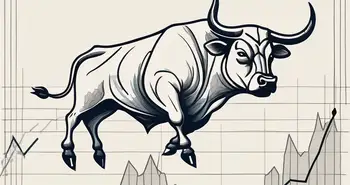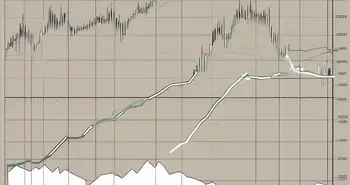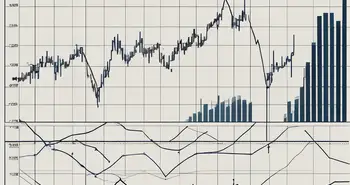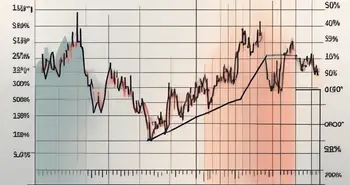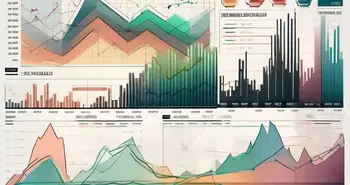Arms Index (TRIN): A Powerful Tool for Gauging Market Strength and Weakness

I'm excited to share with you everything I've learned about the Arms Index, a fascinating tool for traders in the financial markets. My journey with the Arms Index began several years ago when I was trying to make sense of market dynamics. This guide will help you not just grasp the concept but effectively apply it in your trading strategy.
What is the Arms Index?
The Arms Index, often referred to as the TRIN (Trading Index), is a market breadth indicator devised by Richard Arms in 1970. It compares the ratio of advancing and declining stocks to the ratio of their volume. This unique approach helps traders identify potential market reversals and gauge the strength of market trends.
In essence, the Arms Index serves as a gauge of market sentiment. When I first encountered it, I was struck by its ability to reflect the underlying aggression and momentum of buyers and sellers. The intuition behind this indicator is simple: if more volume is associated with declining stocks, it indicates negative sentiment, and vice-versa.
The Concept Behind the Arms Index
The Arms Index combines price action and trading volume in a straightforward mathematical model. It’s a powerful reminder that price movements are driven not just by price alone but by the volume behind those movements. Early in my trading career, I often overlooked volume, only to realize its critical role later on.
Using the Arms Index effectively can refine your market perspective. It’s not just about whether the market is going up or down; understanding the intensity of this movement is crucial for making informed decisions.
Importance of the Arms Index in Trading
The Arms Index provides insights into market conditions that other indicators might miss. For example, a high Arms Index reading often suggests that the market may be hitting a bottom, while a low reading can indicate overbought conditions. This can help traders like myself to capitalize on entry and exit points effectively.
During my experience, I have often found the Arms Index to be invaluable in volatile market conditions. It can serve as an early warning system, signaling when trends may be reversing, allowing traders to adjust their strategies accordingly.
The Mathematical Formula of the Arms Index
To calculate the Arms Index, use the formula:
- Divide the number of advancing stocks by the number of declining stocks to get the advance-decline ratio.
- Divide the volume of advancing stocks by the volume of declining stocks to get the volume ratio.
- Finally, divide the advance-decline ratio by the volume ratio to yield the Arms Index value.
Mathematically, it looks like this:
ARMS Index = (Advances / Declines) / (Advancing Volume / Declining Volume)
Understanding the Numerator and Denominator
The numerator consists of the advance-decline ratio, which shows the balance between advancing and declining stocks. A greater numerator indicates more strength among advancing stocks. On the other hand, the denominator reflects the volume, allowing traders to see if price movements are supported by high or low trading activity.
This dual aspect of price and volume creates a robust indicator. It has certainly changed my approach to reading market signals. When both price and volume align, you have a more confident trading signal.
Interpreting the Arms Index Value
The Arms Index can vary significantly. Typically, a value above 1.0 indicates a bearish sentiment (more volume on declines), while a value below 1.0 suggests bullish sentiment (higher volume on advances).
I remember a time when I encountered an Arms Index reading of 2.0 during a market correction. This value hinted at extreme selling pressure, and I made the decision to hold off on selling and instead started looking for buying opportunities. It was a lesson in trusting the indicators over emotions.
The Arms Index and Market Conditions
Understanding how the Arms Index behaves in various market conditions can significantly influence your trading. Markets are rarely static, and while technical analysis can provide insights, the Arms Index shines in directional shifts.
The Arms Index in Bullish Markets
In a bullish market, you often see low Arms Index values, indicating that buying pressure is dominant. Traders might interpret this situation as confirmation of a continuing uptrend. However, it's essential to stay aware, as an overly low Arms Index could foreshadow market exhaustion.
During several bullish runs, I've kept a watchful eye on decreasing Arms Index values, adjusting my stop-loss levels as necessary when the bullish momentum seemed overly optimistic.
The Arms Index in Bearish Markets
Conversely, in bearish markets, the Arms Index tends to present higher values. It’s crucial to be cautious when you see consistently high Arms Index readings, as this can signal relentless selling pressure. However, it can also indicate potential buying opportunities if you believe that the market is oversold.
I remember analyzing a bearish market where the Arms Index surged past 3.0. It was tempting to panic. Instead, I used this as a signal to look for bargain buys, ultimately capitalizing on a market rebound.
Using the Arms Index in Trading Strategies
Incorporating the Arms Index into your trading strategies can provide a significant edge. Its ability to capture market sentiment makes it an excellent tool for timing trades.
Timing the Market with the Arms Index
One effective strategy is to use the Arms Index to identify potential reversal points. For instance, a high Arms Index reading might signal a buying opportunity during market corrections, while a low reading could be a prompt to start selling.
In my experiences, I've often aligned the Arms Index with other indicators, such as moving averages, to confirm signals before entering a trade. This multi-faceted approach adds layers to my decision-making process.
Identifying Overbought and Oversold Conditions
The Arms Index can be particularly useful for recognizing overbought and oversold conditions. By interpreting drastic changes in the index value, I have often pinpointed ideal entry and exit spots.
For example, a consistently high Arms Index while prices are declining may allow traders to find opportunity in an oversold condition. Remember, patience is key; the market needs time to correct itself before jumping in.
Limitations of the Arms Index
Despite its numerous strengths, no tool is perfect, and the Arms Index is no exception. It’s essential to be aware of its limitations.
Misinterpretations of the Arms Index
One common pitfall among traders is misinterpreting the Arms Index readings. A fluctuating Arms Index can lead to confusion if not analyzed in conjunction with other indicators. I learned early on that context is fundamental. It’s not enough to simply look at the number; consider market context, news events, and other indicators before acting.
The Arms Index and Market Noise
Market noise can also affect the Arms Index's reliability. Sudden spikes or drops due to news releases can skew the readings, making it appear as though a significant trend is emerging when it’s just short-term volatility. Monitoring the Arms Index over a more extended period can mitigate some of this noise.
FAQ
- What is the Arms Index used for?
The Arms Index is primarily used to measure market sentiment and identify potential buy or sell signals based on the relationship between advancing and declining stocks and their respective volumes.
- How do you interpret the Arms Index?
A value above 1.0 indicates bearish sentiment, while a value below 1.0 suggests bullish sentiment. Higher values signify stronger selling pressure, and vice-versa.
- Can the Arms Index alone dictate trading decisions?
No single indicator should dictate trading decisions. The Arms Index should be used in conjunction with other technical analysis tools to enhance the overall quality of your trading strategy.
In conclusion, the Arms Index is a powerful tool that, when understood and applied correctly, can greatly enhance your trading strategy. My advice is to keep learning and adapt as market conditions change. Happy trading!
Ready to take your trading to the next level with the insights you've gained from the Arms Index? Discover Morpher, the revolutionary trading platform that leverages blockchain technology for a seamless investing experience. With Morpher, you can trade a variety of asset classes, from stocks and cryptocurrencies to unique markets like NFTs and sneakers, all with zero fees and infinite liquidity. Embrace the power of fractional investing, short selling without interest fees, and up to 10x leverage to maximize your trades. Plus, with the Morpher Wallet, you maintain full control over your funds. Elevate your trading strategy on a platform that's as innovative as your approach. Sign Up and Get Your Free Sign Up Bonus today, and join the future of trading with Morpher.

Disclaimer: All investments involve risk, and the past performance of a security, industry, sector, market, financial product, trading strategy, or individual’s trading does not guarantee future results or returns. Investors are fully responsible for any investment decisions they make. Such decisions should be based solely on an evaluation of their financial circumstances, investment objectives, risk tolerance, and liquidity needs. This post does not constitute investment advice.

Painless trading for everyone
Hundreds of markets all in one place - Apple, Bitcoin, Gold, Watches, NFTs, Sneakers and so much more.

Painless trading for everyone
Hundreds of markets all in one place - Apple, Bitcoin, Gold, Watches, NFTs, Sneakers and so much more.

